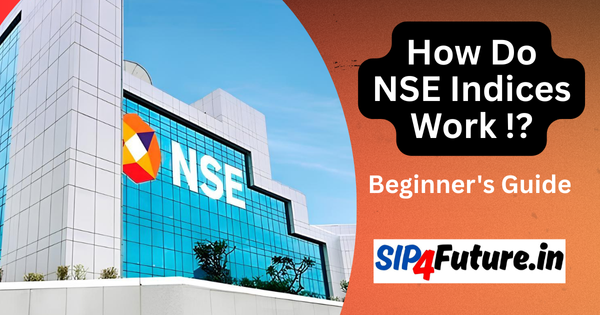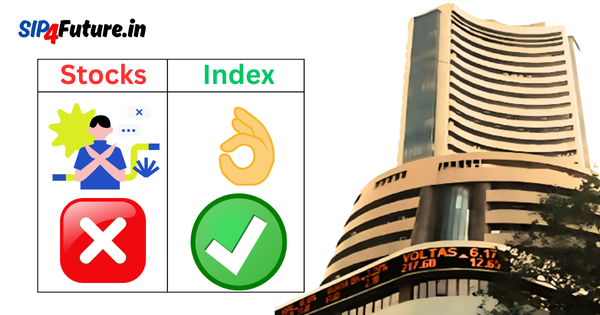The scope of insurance market in India is a focal point for investors and policymakers as the country’s insurance sector, valued at $131 billion in FY23, gears up for significant growth. Despite its potential, India lags behind developed nations like the USA, UK, and Japan in penetration, density, and product diversity. This article delves into the scope of the insurance market in India, compares it with mature markets, and examines indices tracking the insurance sector in India and developed nations. By analyzing key metrics, structural differences, growth drivers, and market indices, we highlight why India’s insurance market is a promising investment opportunity.
Understanding the Insurance Market in India
India’s insurance market, regulated by the Insurance Regulatory and Development Authority of India (IRDAI), encompasses life insurance (70% of premiums), general insurance (30%), and reinsurance. In FY23, it recorded a penetration rate of 4.2% of GDP (life: 3.8%, non-life: 1%) and a density of $92 per capita, as per the IRDAI Annual Report 2022–23. Leading players like Life Insurance Corporation of India (LIC), SBI Life Insurance, and ICICI Lombard drive the market, but low penetration signals vast untapped potential compared to developed nations.
Table 1: Key Metrics of India’s Insurance Market vs. Developed Nations (2023)
| Metric | India | Developed Nations | Source |
|---|---|---|---|
| Penetration (% of GDP) | 4.2% (Life: 3.8%, Non-Life: 1%) | 7–12% (USA: 7.5%, UK: 8.6%, Japan: 9.1%) | Swiss Re Sigma Report 2023 |
| Density (USD per capita) | $92 (Life: $70, Non-Life: $22) | $2,000–$5,000 (USA: $4,200, Japan: $3,300) | IRDAI Annual Report 2022–23 |
| Market Size | $131 Bn (Life: $81.3 Bn) | $2–3 Tn (USA: $2.8 Tn, Japan: $0.5 Tn) | McKinsey Global Insurance Report 2024 |
| Life Insurance Growth (CAGR) | 7.1% (2024–28) | 1–3% (USA: 2%, UK: 1.5%) | Swiss Re, IRDAI |
| Non-Life Insurance Growth (CAGR) | 16–18% (2024–28) | 3–5% (USA: 4%, Germany: 3.5%) | Swiss Re, IRDAI |
Why India’s Insurance Market Lags Behind Developed Nations
The scope of the insurance market in India is shaped by economic, demographic, and regulatory factors. While developed nations have mature, saturated markets, India’s market is in a high-growth phase. Key reasons for the gap include:
1. Low Penetration and Density
India’s insurance penetration (4.2%) is far below developed nations (7–12%). For example, the UK’s penetration is 8.6%, driven by mandatory insurance, as noted in the Swiss Re Sigma Report 2023. India’s density ($92) contrasts with $4,200 in the USA, reflecting limited affordability and awareness.
2. Consumer Awareness
Only 30% of Indians understand insurance products, compared to 80–90% in developed nations, per a McKinsey report. In India, insurance is often seen as a savings tool, unlike the risk-protection focus in developed markets.
3. Economic Constraints
India’s per capita income ($2,600) limits affordability compared to $40,000–$60,000 in developed nations. High out-of-pocket healthcare costs (50% of expenditure) compete with insurance spending, constraining the scope of the insurance market in India.
4. Rural Underpenetration
With 70% of India’s population rural, only 26% of policies are sold in rural areas, per IRDAI data. Developed nations have uniform coverage across regions, supported by robust distribution networks.
5. Regulatory Volatility
Frequent regulatory changes, such as tax revisions on high-value policies, create uncertainty in India. Developed nations benefit from stable frameworks like Solvency II in Europe, as per an RBI report.
Growth Potential of India’s Insurance Market
The scope of the insurance market in India is immense, with the market projected to reach $222 billion by 2026, per Swiss Re. Life insurance premiums are expected to hit ₹24 lakh crore by FY31, growing at a 7.1% CAGR. Key growth drivers include:
1. Demographic Advantage
India’s young population (56% aged 20–59 by 2025) and rising middle class (50% of households by 2030) create a large insurable base. Urbanization (40% urban population by 2030) boosts demand for health and property insurance, as noted in a Moneycontrol article.
2. Regulatory Support
IRDAI’s “Insurance for All by 2047” mission promotes universal coverage through initiatives like Bima Vistaar, Bima Vahak, and Bima Sugam. The FDI limit increase to 74% in 2021, per RBI guidelines, attracts global insurers.
3. Technological Transformation
Over 110 InsurTech startups leverage AI, IoT, and blockchain to enhance underwriting and distribution. Platforms like Policybazaar and partnerships (e.g., Bajaj Allianz with City Union Bank) expand reach, aligning with developed nations’ digital trends (30–40% online sales).
4. Emerging Products
The scope of the insurance market in India is expanding with cyber insurance, EV insurance (4 million EVs by 2025), and climate risk insurance (93% uninsured catastrophe exposures). Parametric insurance is emerging, mirroring developed markets.
5. Health and Non-Life Growth
Health insurance, growing at 20% CAGR, is driven by medical inflation and post-COVID awareness. Motor insurance (40% of non-life premiums) will expand with EV adoption, per an Economic Times report.
Table 2: Projected Growth of India’s Insurance Market
| Segment | Current Size (FY23) | Projected Size (2026) | CAGR (2024–28) | Source |
|---|---|---|---|---|
| Total Insurance Market | $131 Bn | $222 Bn | 14–16% | Swiss Re |
| Life Insurance Premiums | $81.3 Bn | ₹24 Lakh Cr (FY31) | 7.1% | IRDAI, Swiss Re |
| Non-Life Insurance | ~$49.7 Bn | ~$80 Bn | 16–18% | McKinsey, Moneycontrol |
Indices Tracking the Insurance Sector
The performance of the insurance sector is tracked by stock market indices, which provide insights into its growth and stability. In India, no dedicated insurance index exists, but financial services indices include major insurers. In developed nations, specific insurance indices or broader financial indices track the sector. Below is a comparison:
Table 3: Indices Tracking Insurance Sector in India and Developed Nations
| Index | Country | Description | Key Constituents | 3-Year Return (2022–2025) | Source |
|---|---|---|---|---|---|
| Nifty Financial Services Index | India | Tracks financial services, including life and general insurers. | SBI Life, HDFC Life, ICICI Prudential, ICICI Lombard | 53.05% | NSE India |
| BSE Financial Services Index | India | Covers financial sector, including insurers listed on BSE. | SBI Life, HDFC Life, LIC, Bajaj Allianz | ~50% | BSE India |
| S&P Insurance Select Industry | USA | Tracks US insurance companies, including life, health, and property insurers. | MetLife, Prudential, Allstate, AIG | 45.2% | S&P Global |
| FTSE 350 Life Insurance | UK | Tracks UK life insurance companies listed on the FTSE. | Aviva, Prudential PLC, Legal & General | 38.7% | FTSE Russell |
| Nikkei 225 Insurance Index | Japan | Tracks Japanese insurance companies within the Nikkei 225. | Tokio Marine, Sompo Holdings, MS&AD Insurance | 42.1% | Nikkei |
Analysis:
- India: The Nifty Financial Services Index (53.05% 3-year return) outperforms many global peers, reflecting India’s high-growth insurance market. However, the lack of a dedicated insurance index limits sector-specific tracking.
- Developed Nations: The USA’s S&P Insurance Select Industry Index (45.2%) and Japan’s Nikkei 225 Insurance Index (42.1%) show stable returns, driven by mature markets. The UK’s FTSE 350 Life Insurance Index (38.7%) lags, reflecting slower growth in Europe’s saturated market.
- Implications: India’s indices, including insurers like SBI Life and HDFC Life, offer higher growth potential due to underpenetration, but volatility is higher compared to developed nations’ indices.
How India’s Insurance Market Differs from Developed Nations
The scope of the insurance market in India is shaped by its unique characteristics:
1. Market Maturity
India’s market, liberalized in 2000, is young, with life insurance dominating due to savings-oriented products. Developed nations have mature markets with diversified offerings, per the McKinsey Global Insurance Report 2024.
2. Distribution Channels
India relies on agents (50% of premiums) and bancassurance (30%), with digital sales at 10%. Developed nations have 30–40% digital sales, driven by InsurTech, per Swiss Re.
3. Product Diversity
India’s products are limited to term plans, ULIPs, and health insurance. Developed nations offer cyber, climate, and longevity insurance, catering to evolving risks.
Challenges Limiting India’s Insurance Market Scope
The scope of the insurance market in India faces hurdles:
- Low Awareness: Only 30% of Indians understand insurance, compared to 80–90% in developed nations (McKinsey).
- Economic Constraints: India’s $2,600 per capita income limits affordability compared to $40,000–$60,000 in developed nations.
- Protection Gap: A $40.4 billion mortality gap and 93% uninsured catastrophe exposures highlight unmet demand (Swiss Re).
- Rural Underpenetration: Only 26% of policies are rural, unlike uniform coverage in developed nations.
Future Trends Shaping India’s Insurance Market
The scope of the insurance market in India will converge with developed nations by 2047, driven by:
1. Increasing Penetration
IRDAI targets 6–7% penetration by 2047, approaching developed nations’ levels, per IRDAI.
2. Digital Transformation
With 1.2 billion internet users by 2025, digital sales will rise, per Moneycontrol.
3. Public-Private Partnerships
Schemes like Ayushman Bharat PM-JAY reduce the protection gap, mirroring developed nations’ safety nets.
Table 4: Future Trends in India’s Insurance Market
| Trend | Impact on India | Alignment with Developed Nations | Source |
|---|---|---|---|
| Digital Sales | 20–30% by 2030 | 30–40% currently | Moneycontrol |
| Penetration | 6–7% by 2047 | 7–12% currently | IRDAI |
| Health Insurance Growth | 20% CAGR | 5–7% CAGR | Economic Times |
Conclusion
The scope of insurance market in India is vast, with a $131 billion market projected to reach $222 billion by 2026, driven by low penetration (4.2%), low density ($92), and a 1.4 billion insurable population. Compared to developed nations’ mature markets (7–12% penetration), India offers higher growth (14–16% CAGR). Indices like the Nifty Financial Services Index (53.05% 3-year return) outperform global peers like the S&P Insurance Select Industry Index (45.2%), reflecting India’s potential. Challenges like low awareness and rural underpenetration persist, but regulatory reforms, InsurTech, and partnerships like Ayushman Bharat will drive convergence with developed nations by 2047.




